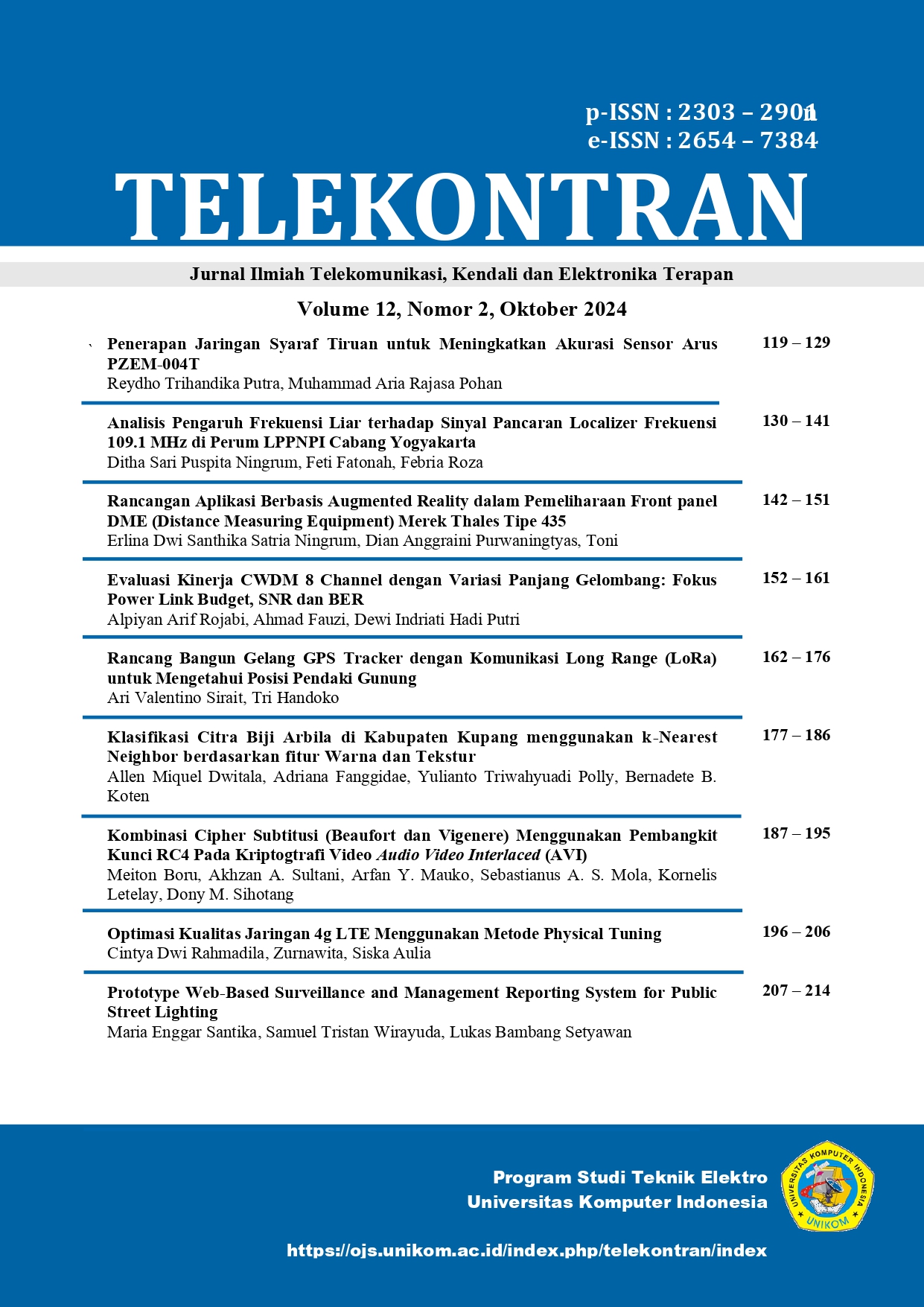Optimization Of 4g Lte Network Quality Using Physical Tuning Method
Main Article Content
Abstract
The development of the 4G LTE network is increasing as the number of users increases every year. Therefore, the increase in the number of users must be accompanied by an increase in cellular telecommunications network infrastructure. The problems that cause the network to decline are the extent of
service coverage (coverage) and the level of network service quality (quality). In this research, the 4G LTE network quality design uses a physical tuning method located in the Aia Pacah area, because the coverage area is still not good, causing interference. The research began by collecting 4G LTE signal data using the drive test method to determine network quality and analyzing it using tems discovery software and optimizing using Atoll software. The data processing process displays several basic parameters of the 4G LTE network, namely RSRP, SINR, and THROUGHPUT. The results of measuring the quality of the 4G LTE network in the Aia Pacah area before optimization of the KPI standard results showed that the RSRP value increased from 56.46% to 65%, the SINR decreased from 96.2% to 89.1% and the THROUGHPUT experienced a a decrease from a value of 88.3% to 78.5%.
Downloads
Article Details
Section

This work is licensed under a Creative Commons Attribution-ShareAlike 4.0 International license.
